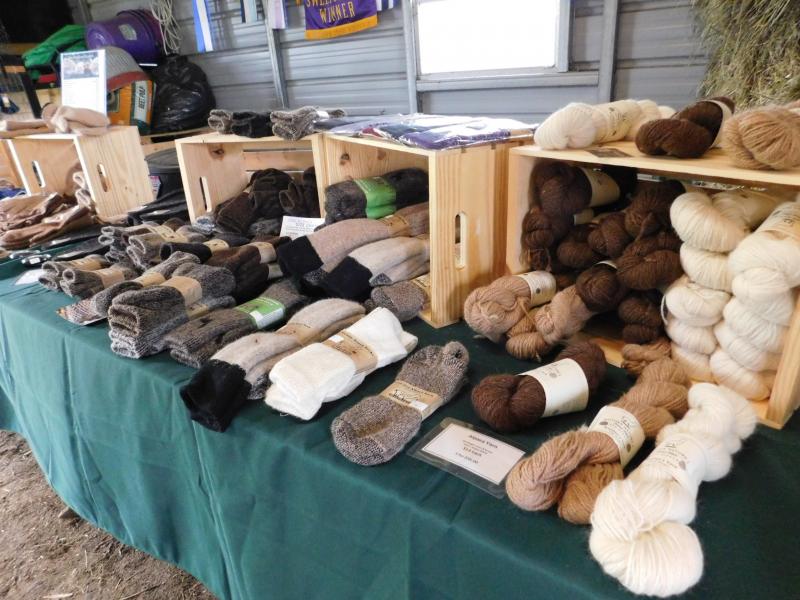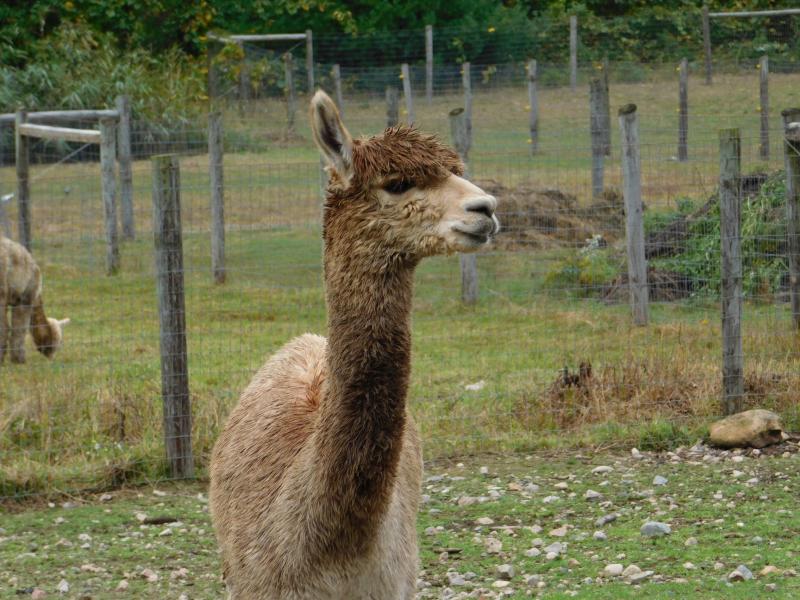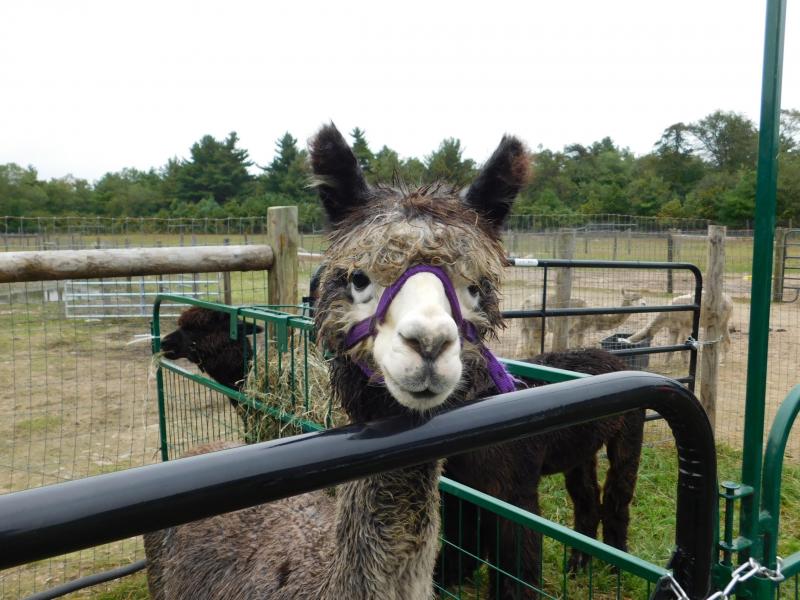Friendly, fuzzy alpacas are a Mattapoisett secret
Cranberry bogs might be giving way to a new farming tradition.
That's if Pine Meadows Alpacas has anything to say about it. The small alpaca farm, located on Route 6 in Mattapoisett, took over a former cranberry bog several years ago and installed fuzzy alpacas in the place of bright red berries.
From an initial herd of five animals, Pine Meadows Alpacas, run by Jeff and Heidi Paine, alongside daughters Diana and Lauren, now has 17 alpacas, with more expected. Although, as the average gestation period for an alpaca is 11 months, the wait will be a fairly long one.
Alpacas come from South America, mainly Peru, Chile and Bolivia. They're smaller cousins of the traditional llama—while llamas themselves can weigh over 200 pounds, alpacas rarely weigh over 150 pounds and have finer, softer fleece.
Alpacas themselves only arrived in North America in the 1980s. Jeff and Heidi Paine found them around 2010 when, living in Connecticut, they took a family trip to Vermont. They visited an alpaca farm and knew immediately that this was the family's next project. "I'd had cattle in the past, though not for awhile," Jeff acknowledged.
Lauren, a sophomore at Bristol County Agricultural High School, generally shows the younger alpacas, whose coats are finer. They go to three or four shows a year, including the Big E (the Eastern States Exposition) in Springfield.
Lauren shows a few of the farm's younger alpaca in events like "alpaca performance," which Lauren's father describes as "alpaca agility." She teaches the alpaca to jump, go up steps, walk over tarps and walk down ramps, among other skills.
Lauren herself prefers "showmanship," where the alpaca's handler is judged on their knowledge of alpaca conformation and history. "I've had judges ask me where the alpaca's withers [roughly equivalent to the ridge between shoulderblades on a four-legged animal] are, or where alpacas come from," she said.
All the alpacas are shorn once per year, usually in April. Each alpaca produces between four and seven pounds of fleece, which means that Pine Meadows produces roughly 100 pounds of fleece per year. The Paines send the sheared fleeces to the New England Fleece Company in Fall River, where the yarn is spun into yarn, gloves, hats, socks, scarves and even stuffed animals.
"We send them fleeces, and they send us the rough amount of what we send them back," Heidi Paine explained. "But we don't necessarily get our own fleeces back, so we don't market the products as 'from our own alpacas'."
Oh, and the spitting? Don't worry, said Jeff Paine. Yes, they spit. "They're not just going to walk up to you and spit though," he clarified. Alpacas usually spit when they're fighting with each other, or when they're being shorn. "You'll know it's coming, too," he added. "They'll raise their head up and back, and you'll hear a noise..."
To learn more about Pine Meadows Alpacas, visit www.pinemeadowsalpacas.com.


















